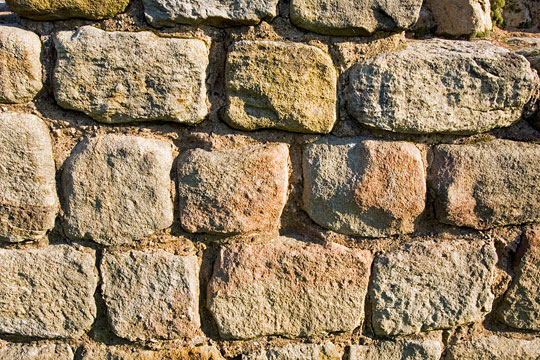Description of Heddon-on-the-Wall
Hadrian’s Wall at Heddon survives to a length of about 220 metres just to the east of the estimated position of milecastle 12. Built into its western end is a late medieval or post-medieval kiln.

Structure
In many places in this sector of Hadrian’s Wall the front (north) face of the Wall has been stripped of its facing stones; they were perhaps removed for use as hard core when the Military Road was built in the mid-18th century. The back (south) is better preserved, the Wall standing in some places to a height of six courses, or 1.4 metres.
The Broad Wall was usually built on a foundation consisting of a single course of flat slabs bonded with clay, which can be seen in places along the front of the Wall here. The lowest course varies in height from 0.22 metres to 0.30 metres; the large size of some of these blocks is typical of the Broad Wall on Tyneside. The lowest course is generally offset from the next course by 1–3 centimetres. In places there is no offset, and this was also absent in the fragment of Wall at the crown of Great Hill to the east, which was removed in 1926.
On the south face of the Wall, in a few places, traces of a hard, fine mortar adhere to the facing stones. This is possibly the remains of some form of rendering or decorative finish, comparable with the plaster finish found beneath the collapsed rear face of the Wall at Denton, just beyond where the Wall is next seen 4 miles to the east.[1] Defensive walls in the Roman world were commonly plastered or whitewashed to emphasise their size.
North of the Wall a shallow depression marks the position of the Wall-ditch.
Kiln
The corn-drying kiln is at the west end of the Wall, close to the medieval settlement of Heddon-on-the-Wall. The floor is paved, and the surrounding wall survives up to three courses high.
READ MORE ABOUT HEDDON-ON-THE-WALL
Footnote
1. P Bidwell and M Watson, ‘Excavations on Hadrian’s Wall at Denton, Newcastle upon Tyne, 1986–89’, Archaeologia Aeliana, 5th series, 24 (1996), 1–56.